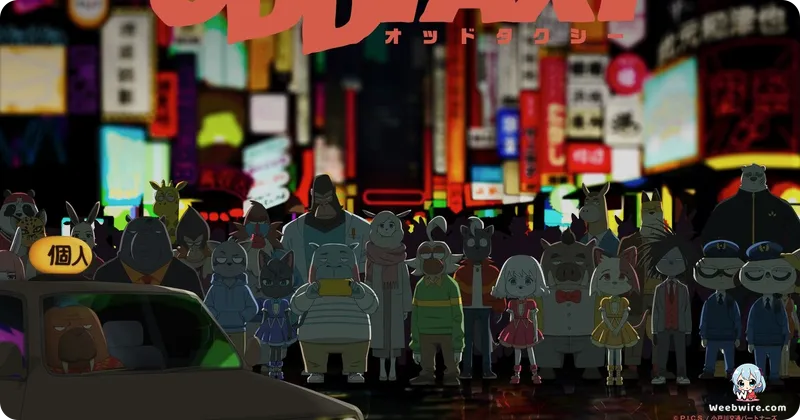The Unconventional Genius: How a Comedy Writer Crafted ODDTAXI's Psychological Masterpiece Dialogue

When ODDTAXI first debuted in 2021, it rapidly established itself as far more than a standard anime offering, quickly achieving sleeper hit status. It garnered critical acclaim not just for its intricately layered mystery, but for its unnervingly naturalistic and profound dialogue. Superficially, the series follows Odokawa, a misanthropic walrus working as a taxi driver, as he navigates the interconnected, often mundane, lives of Tokyo's animal inhabitants. However, the true brilliance of the show lies in its sophisticated structural design and the surprising creative force behind it. A deeper look into the production reveals fascinating, often overlooked details that solidify its standing as a modern psychological classic.
The Unconventional Screenwriting of Kazuya Konomoto
Perhaps the most crucial, defining element of ODDTAXI is the professional history of its series composer and screenwriter, Kazuya Konomoto. In stark contrast to many anime scriptwriters sourced from the light novel or manga spheres, Konomoto built his career as a highly respected writer for Japanese variety shows and stand-up comedy. ODDTAXI represented his inaugural venture into crafting a complete, serialized anime script, an experience that indelibly shaped the show's distinctive cadence and tone.
His background in crafting comedic material accounts for the series' impeccable timing, the seamless, organic flow of conversations, and the masterstroke of disguising vital plot exposition as seemingly trivial, casual banter. The dialogue often feels less like scripted fiction and more like genuine, overheard interactions in a taxi or on the radio, demonstrating a skill refined through years of live performance where every line must be perfectly precise. This highly unconventional approach to scripting forms the very bedrock of the psychological thriller, allowing the complex narrative to unravel through subtle auditory clues rather than relying on overt visual drama.
Commitment to Audio Drama and Sound Design
Further enhancing the series' uniqueness is its deep commitment to audio drama, stemming from its initial concept development by P.I.C.S., which co-produced the animation alongside Studio OLM. The narrative was designed around sound design and voice acting, utilizing the enclosed setting of Odokawa's taxi as the ideal stage for passive listening. Odokawa becomes a reluctant conduit, absorbing the secrets, anxieties, and criminal undercurrents from his passengers.

Discussions concerning social media trends, failed aspirations, or petty crimes, such as the search for the missing high school girl, the dealings of loan shark Dobu, or the machinations of the idol group 'Mystery Kiss', are meticulously introduced bit by bit during these realistic rides. Devoted viewers laud the series for rewarding meticulous attention to sound, noting how slight changes in vocal inflection or background noise frequently foreshadow a character’s true motives long before any explicit reveal.
The Significance of the Anthropomorphic Design
The most discussed and structurally significant piece of information relates to the show’s central art style: the depiction of all characters as anthropomorphic animals. This visual filter is not a mere stylistic choice; it is the fundamental linchpin of the plot tied directly to Odokawa’s mental health. The climactic twist confirms that Odokawa struggles with visual agnosia, specifically prosopagnosia (face blindness), triggered by childhood trauma.
Consequently, he perceives all human faces as animal forms. This revelation instantaneously re-contextualizes the entire viewing experience. The simple animal designs transform into profound symbols of his isolation and his inability to recognize humanity. The production team, led by character designer Hiromi Nakayama, maintained this consistent iconography throughout the run, knowing the twist would drastically alter the audience’s understanding of the visuals themselves. By grounding its high-stakes drama in recognizable modern Tokyo locales, such as Setagaya Ward, ODDTAXI successfully blends fantastical imagery with gritty urban realism, cementing its status as a benchmark in sophisticated contemporary mystery anime.
Credits
ODDTAXI
Author
Kazuya Konomoto
Cover Art
Hiromi Nakayama
Studio
OLM
Publisher
P.I.C.S.
Producers





